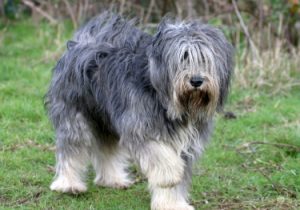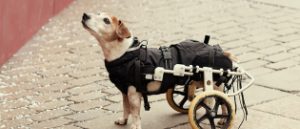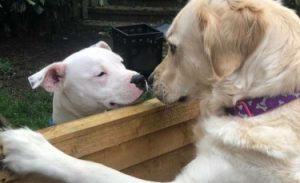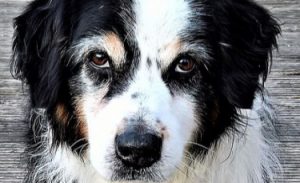Other names: Icelandic Sheepdog, Icelandic Sheepdog, Islenskur Fjárhundur
The Icelandic Shepherd is a Nordic Spitz-type dog, with erect ears and a curled tail. Smaller than average size, its silhouette can be written in a rectangle. Its appearance and its port give off an impression of assurance, liveliness, gentleness and intelligence.
<!–
–>
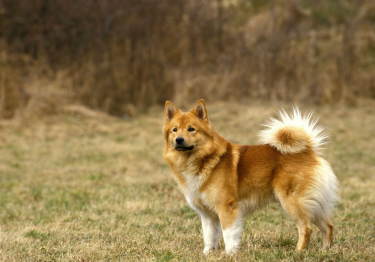
| Half-long | |
| Iceland | |
| Average | |
| Triangular |
| Sex | Weight | Cut |
|---|---|---|
| Female | From 9 kg to 14 kg | From 38 cm to 44 cm |
| Male | From 9 kg to 14 kg | From 38 cm to 44 cm |
History of the breed
the Icelandic Shepherd appeared in Iceland with the landing of the first Viking explorers on the island from the 9th century. Over the generations, he has developed a formidable resistance to the harsh climate and living conditions among the shepherds. His ability to lead and herd large herds over such vast and difficult terrain made him extremely popular.
Outside Iceland and the Scandinavian countries in general, the Icelandic Shepherd Dog remains quite rare. He is enjoying increasing success as a family dog due to his gentle and cheerful character. The Icelandic Shepherd breed was definitively recognized by the Fédération Cynologique Internationale (FCI) on February 17, 1972.
Icelandic Shepherd Photos
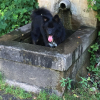
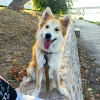
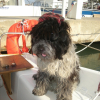
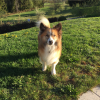
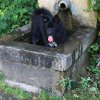
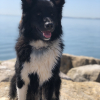
View all Icelandic Shepherd photos of Woopets members
Physical features
His hair: double, thick. The outer coat can be mid-long or long. It is rough, while the undercoat is softer and very dense.
Its color: predominantly fawn (cream to reddish brown), chocolate, gray or black, always accompanied by irregular white markings on part of the face, collar, chest and end of the tail. Black mask in dogs of fawn or gray color.
His head: triangular in shape, with a strong bone structure. The skull, slightly domed, is a little longer than the muzzle. The stop is well defined without being overly accused. The nose is black or brown, the muzzle well developed, the lips black and well joined, the cheeks flat, the jaws articulated in scissors.
His ears: medium in size, well erect, triangular in shape, with a rounded top, extremely mobile and expressive.
His eyes: almond-shaped, dark brown in color (lighter in dogs with brown or cream coats), medium size.
His body: fits into a rectangle, robust. The back is straight, muscular and strong, the kidney broad and muscular, the croup rather short and broad, the chest well let down, the ribs well sprung, the belly slightly raised.
Its tail: high set, rolled up and touching the back.
Behavior and character
| Affectionate | |
|---|---|
| Calm | |
| Protective | |
| Independent | |
| Hunter | |
| Barks / howls |
Behavior with others
| Cohabitation with children | |
|---|---|
| Sociable with other animals | |
| Love strangers |
the Icelandic Shepherd is a dog full of joie de vivre , very playful , curious and friendly , even with visitors. Never fearful or aggressive , he is not a hunter at heart. On the other hand, the Icelandic Shepherd Dog is naturally gifted at leading herds . His liveliness, intelligence and well-marked bark help him enormously in this task.
The Icelandic Shepherd
is it right for you? Take the test!
Education
| Clever | |
|---|---|
| Obedient |
Active and hardworking, the Icelandic Shepherd Dog is attentive to the instructions of his master , whom he always tries to please. For his education, we will therefore rely a lot on this desire to learn and activate, with gentleness and a minimum of firmness to establish the limits not to be exceeded.
Living conditions
| Suitable for apartment living | |
|---|---|
| Good for new masters | |
| Love it hot | |
| Love the cold |
the Icelandic Shepherd is not really made to live in an apartment . Barker and greedy for space, he is much happier in the countryside. It can adapt to urban life if it has a fenced garden and if it enjoys frequent outings. A great athlete , he loves to accompany his master on walks or jogging.
Health
| Solid | |
|---|---|
| Ease of gaining weight |
Rustic and doubtful of a very dense double coat, the Icelandic Sheepdog is remarkably resistant to low temperatures and bad weather. It is characterized by fairly solid health and the absence of predisposition to any disease.
Hypoallergenic breed
No
Litter size
Between 4 and 6 puppies
To protect yourself from these risks and insure your companion in the event of health problems, Woopets recommends an Icelandic Shepherd dog insurance .

function showAssuranceForm () {var siteReferer = var id_race_association = ”; //console.log(id_race_association);success: function (html) {}});}document.addEventListener (‘DOMContentLoaded’, () => {$ (‘# assuranceModalBanner’). on (‘show.bs.modal’, function (event) {showAssuranceForm ();});});
Life expectancy
Minimum: 11 years old
Maximum: 13 years
The life expectancy of an Icelandic Shepherd Dog is, on average, between 11 years and 13 years.
Calculate the human age of your Icelandic Shepherd Dog!
To choose… 1 year 2 years 3 years Four years 5 years 6 years 7 years 8 years 9 years 10 years 11 years old 12 years 13 years 14 years old 15 years old 16 years old 17 years 18 years old 19 years old 20 years 21 years old
Maintenance and hygiene
| Ease of maintenance | |
|---|---|
| Cost of maintenance | |
| Hair loss |
| Drool level | |
|---|---|
| Ease of grooming |
the Icelandic Shepherd Dog experiences 2 moults per year during which hair loss is of varying intensity. Some dogs lose a lot more than others. Regular maintenance helps preserve its appearance and condition.
Brushing of the Icelandic Shepherd Dog is to be done once a week . It must be long and meticulous . During the moulting periods, it is recommended to brush it much more often: at least 3 times a week.
Price and budget
Purchase price
Mini
900 € Maxi
1400 €
The purchase price of an Icelandic Shepherd is between 900 € and 1400 €.
Annual maintenance cost
Mini
1000 € Maxi
€ 1,100
The annual maintenance cost of an Icelandic Shepherd is between 1000 € and 1100 €.
No name is currently proposed. Use our tool to find the name of your Icelandic Shepherd Dog!
Food
Muscular and athletic , the Icelandic Shepherd must have a diet adapted to his morphology. His diet must meet his daily energy expenditure. Thus, he needs high quality kibble in a balanced proportion .
Want the best for your dog?
Create the tailor-made diet for your Icelandic Shepherd Dog
I discover !
PROMO -30% | Delivered to you!

Physical activity
| Athletic | |
|---|---|
| Energy level | |
| Potential to play |
The Icelandic Shepherd Dog needs to stay active and be stimulated . He is above all a working dog and, as such, he must have great freedom and frequent opportunities to let off steam. 2 long daily walks are necessary for its balance.
Others
| Master character <span class="btnTooltip qTip2" title="- Calm: the master must be gentle and know how to show patience. – Active: the owner must be energetic and dynamic to live in harmony with his dog. – Hyperactive: the owner must be stimulating and very restless to suit the temperament of his dog.”> |
Calm |
|---|
We talk on the forum
Shetland Shepherd or Australian Shepherd
Guest message
Australian Shepherd, “SHEPHERD” / genetic problem
Message from Cindy & Oreo
Weight and measurements: Malinois Shepherd and Dutch Shepherd
Message from Fouad Bouregba
The white shepherd, a sensitive dog?
Message from alison
why people are afraid of the german shepherd
Message from djo27
Do you have a question about the Icelandic Shepherd Dog?
Do not hesitate to ask Woopets visitors for advice on the forum!
FCI Information
FCI No.
289
FCI Group
Group 5: Spitz-type and primitive-type dogs
Recognized by FCI
Since 1972
</div



